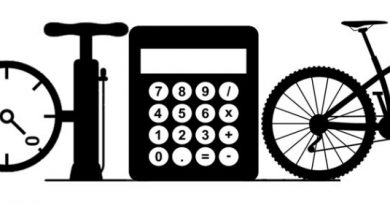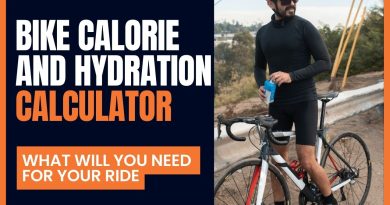Bike Saddle Height Calculator
This saddle height calculator is to help you work out your optimum seat height. This calculator is perfect for Road bikes, Gravel bikes, MTB, Touring bikes, E-bikes, etc. It can also be useful for finding your maximum dropper posts height. Once you’ve used the calculator, keep on reading below to learn how to finely tune your saddle height for best results.
Your ideal saddle height is:
How to Use the Bike Saddle Height Calculator
1) Measure your inseam (barefoot from the ground to the top of your crotch)
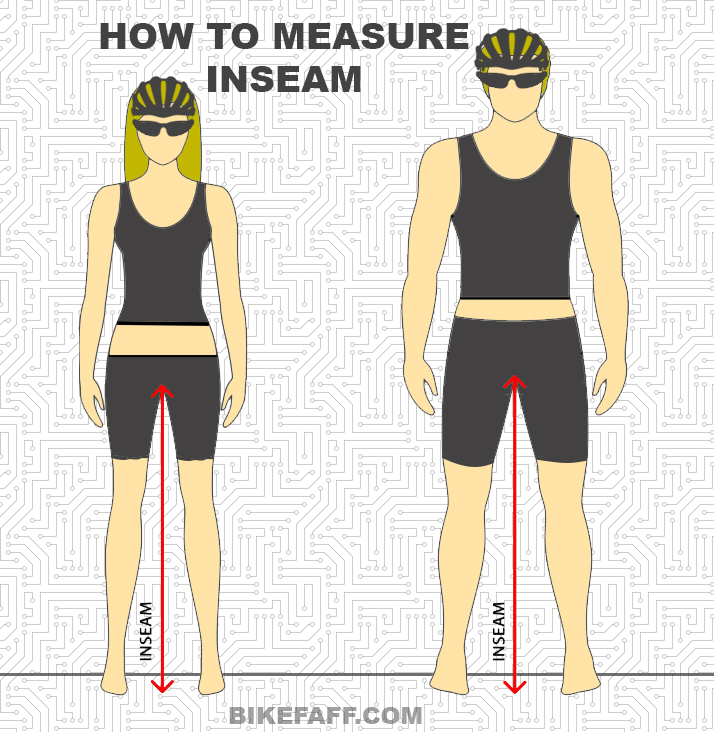
2. The saddle height given from the calculator in green is your saddle height measured from the center of the bottom bracket to the top of the saddle.
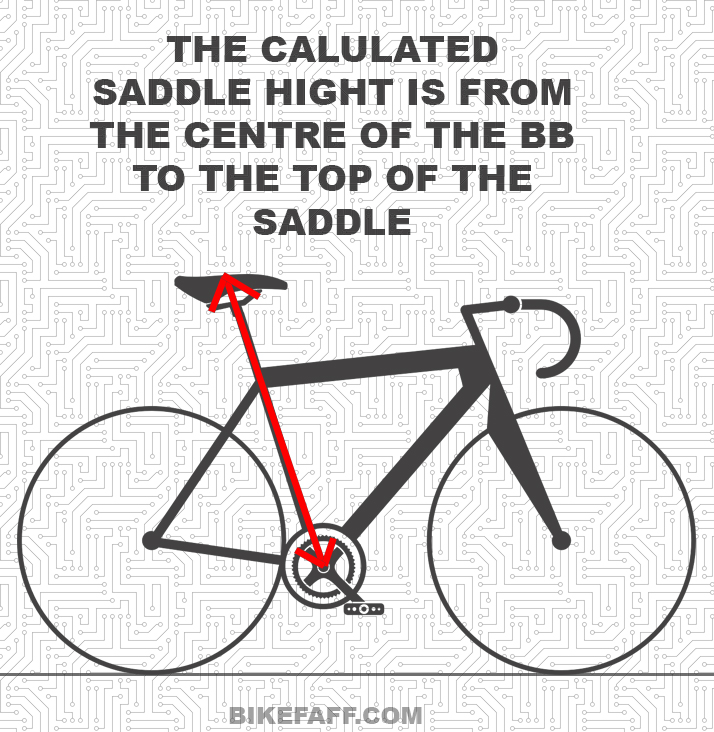
Please note: the saddle height given should only be used as a starting point. This is because we are all built slightly differently.
How to Get The Perfect Saddle Height?
Getting the perfect saddle height sounds simple, but there are actually quite a few factors to consider when attempting to get the saddle height.
Crank Length
It’s surprisingly common to see people with their saddles much too low because they’re using cranks that are much too long. There is a common myth that longer cranks increase pedaling efficiency or power, however, this has been proven false in a number of studies (you can see an interesting study by Paul R Barratt here).
We have made a crank length calculator and guide you can see here. Remember, if you have bikes with different crank lengths, you will need to adjust your saddle height accordingly. For example, if your main bike has 170mm cranks, and your other bike has 175mm cranks, then you will need to lower your saddle height by 5mm on your other bike to account for this.
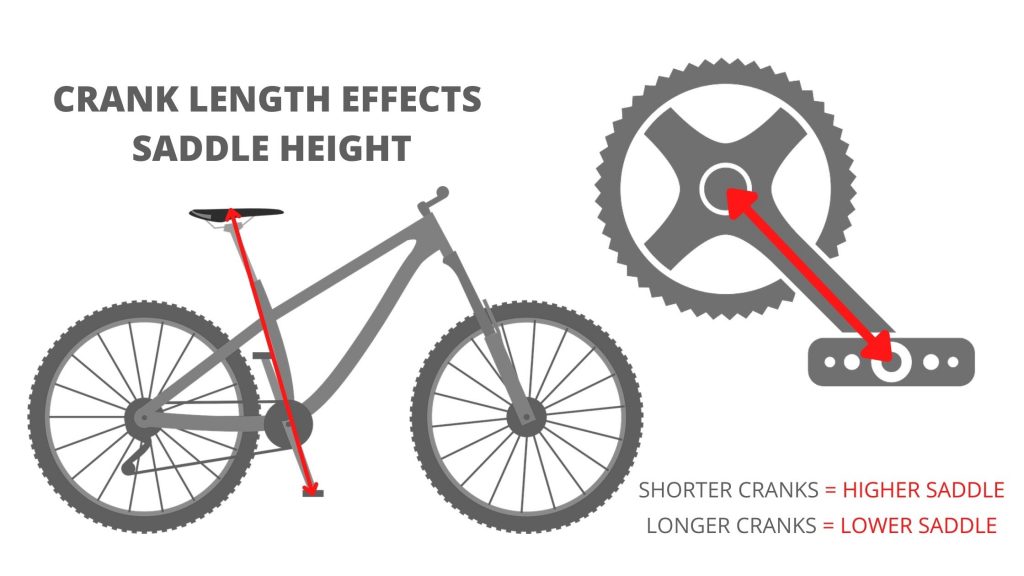
Saddle Fore/Aft Position
The saddle fore/aft position is where the saddle is positioned on the rails. Ideally, you want to set the fore/aft position set so your knees are directly above the pedal axel while the crank is in the three o’clock position. Traditionally, this is usually found by dropping a plumbline from the front of your knee, while adjusting the saddle backward and forwards until the line is perfectly centered over the pedal axle. You may find using a meter ruler simpler as it does not bend (unlike the string from the plumbline). Remember, the fore/aft position should be adjusted once you have established your saddle height. Getting the fore/aft position correct is important because it’s often the cause of knee discomfort.
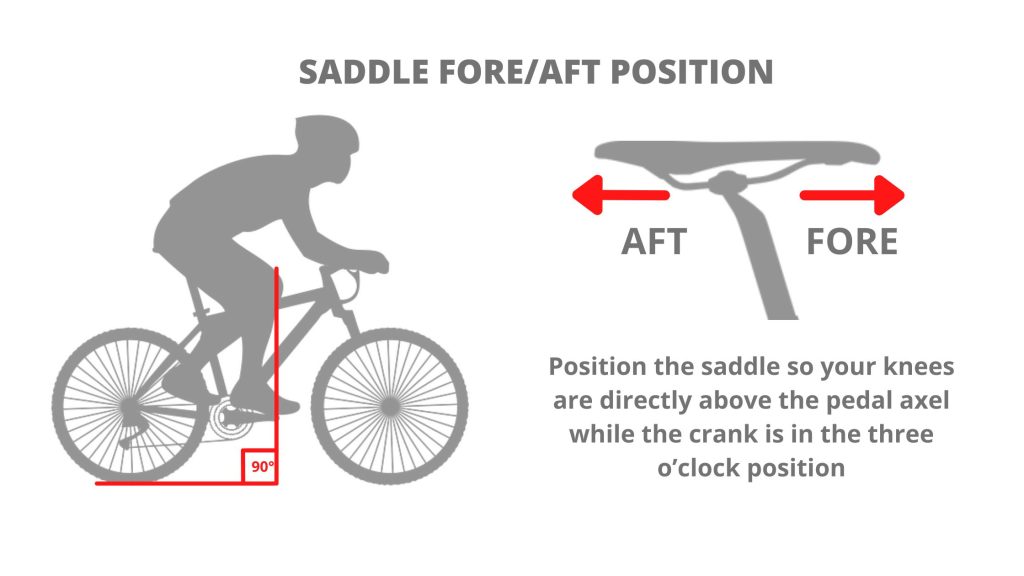
Stack Height of Pedals/shoes/cleats
Different shoes, pedals, and cleats, all come in a variety of stack heights- which can all have an effect on your ideal saddle height. If you only have one bike, then this will not be too much of an issue. However, it could be worth considering if you switch between bikes, or if you upgrade your shoes/pedals.
Questions and Answers
How High Should Your Saddle Be?
Your saddle height is correct when your heel lightly touches the pedal when is the crank is in the 6 o’clock position. Your knees should have a slight bend with your leg at 80-90% of full leg extension. To get a starting point you can try our saddle height calculator on the top of this page and work from there.
How Do I Know If My Saddle Is Too High?
Your saddle height is too high if your knees don’t have a bend when the pedal is in the lowest position. You might also feel strain in the back of your knees, and knee discomfort. Remember your leg should be at around 80-90% of full leg extension.
How Do I Know If My Saddle Is Too Low?
Your saddle height is too low when your knees are very bent when your foot is on the pedal in the lowest position. Your knees should only have a slight bend. if your saddle high is too low this can also cause discomfort around the keens and lower back.
Final Thoughts
There are many different variables that can be considered when setting your saddle height, but it’s important to remember that humans come in many different shapes and sizes. So the only real way to find your perfect saddle height is to use the information in the article as a starting point and then make small incremental changes to see what works best for you.
You may find our other calculators useful:



